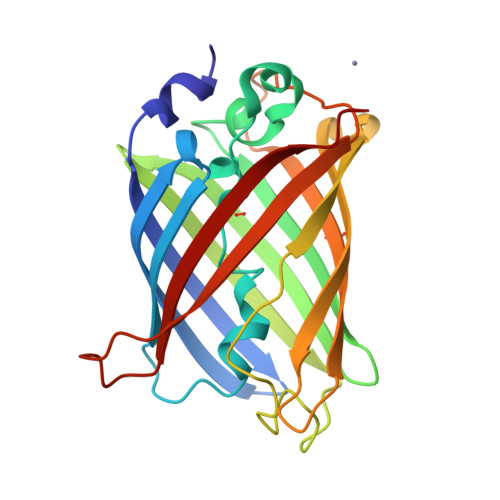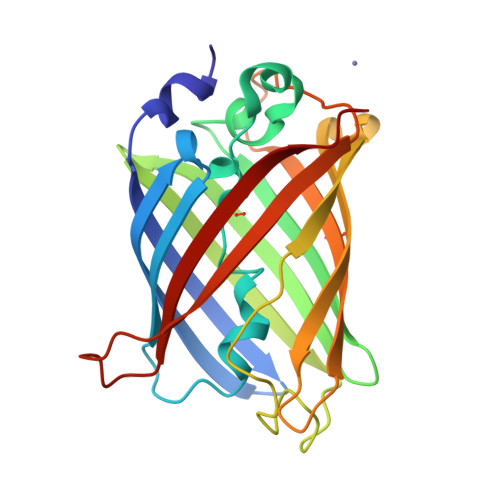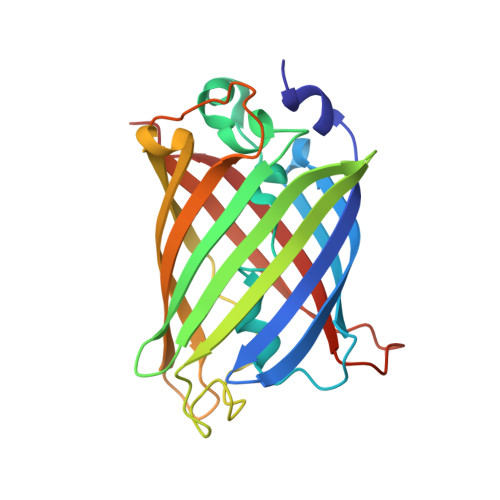Stalling chromophore synthesis of the fluorescent protein Venus reveals the molecular basis of the final oxidation step.
Auhim, H.S., Grigorenko, B.L., Harris, T.K., Aksakal, O.E., Polyakov, I.V., Berry, C., Gomes, G.D.P., Alabugin, I.V., Rizkallah, P.J., Nemukhin, A.V., Jones, D.D.(2021) Chem Sci 12: 7735-7745
- PubMed: 34168826
- DOI: https://doi.org/10.1039/d0sc06693a
- Primary Citation of Related Structures:
6SM0 - PubMed Abstract:
Fluorescent proteins (FPs) have revolutionised the life sciences, but the mechanism of chromophore maturation is still not fully understood. Here we show that incorporation of a photo-responsive non-canonical amino acid within the chromophore stalls maturation of Venus, a yellow FP, at an intermediate stage; a crystal structure indicates the presence of O 2 located above a dehydrated enolate form of the imidazolone ring, close to the strictly conserved Gly67 that occupies a twisted conformation. His148 adopts an "open" conformation so forming a channel that allows O 2 access to the immature chromophore. Absorbance spectroscopy supported by QM/MM simulations suggests that the first oxidation step involves formation of a hydroperoxyl intermediate in conjunction with dehydrogenation of the methylene bridge. A fully conjugated mature chromophore is formed through release of H 2 O 2 , both in vitro and in vivo . The possibility of interrupting and photochemically restarting chromophore maturation and the mechanistic insights open up new approaches for engineering optically controlled fluorescent proteins.
Organizational Affiliation:
School of Biosciences, Molecular Biosciences Division, Cardiff University Sir Martin Evans Building Cardiff CF10 3AX UK jonesdd@cardiff.ac.uk +44 (0)29 2087 4290.



















